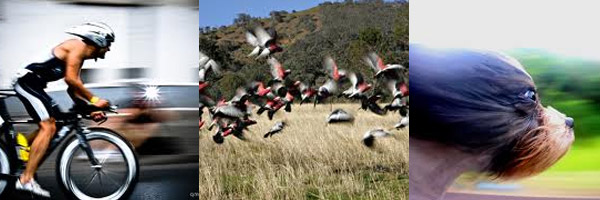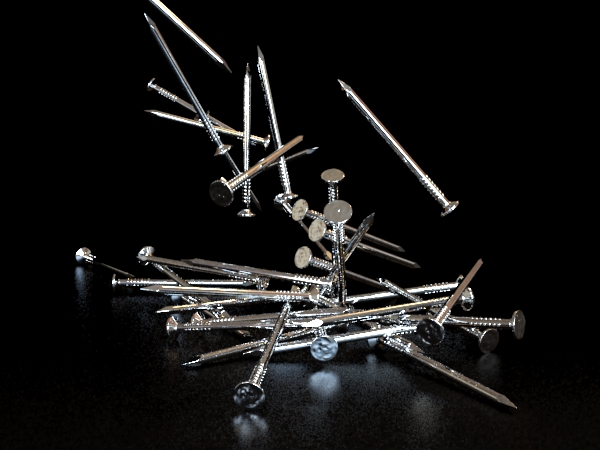Dear friends!
let’s start from definition of motion blur I found on wikipedia

Motion blur is the apparent streaking of rapidly moving objects in a still image or a sequence of images such as a movie or animation. It results when the image being recorded changes during the recording of a single frame, either due to rapid movement or long exposure.I bring this to your attention to highlight – once more – how lovely is first understand photography, then simply translate concepts in V-Ray!
Motion blur is due to rapid movement or long exposure: in few words the subject is moving faster than the shutter speed.

MAIN CONDITION: To get motion blur with V-Ray is getting animated objects. Using RayFire (a very simple and powerful tool) I already animated this group of nails.
Check the final result in this video:
As explained in many lessons of our v-ray course, this kind of situation is classified as medium amount of light that, in our 5SRW standard, means we can use shutter speed = 50 – Here the draft render at frame 10:

Note: To get motion blur I need to render an intermediate frame, while objects are falling.
We don’t need to make meaningless tests to get this effect! Just ask to yourself:
Could shutter speed = 50 be an exposure time longer enought to capture falling objects?
Every photographer in the world (V-Ray unaware) would answer: YESS! Great, so just let’s enable motion blur in the V-Ray Physical Camera:

Render again and here the result:

Of course the photographer was right!
The objects are blurred.. too much I say! Motion blur is a great way to communicate dynamism, but it’s important to get the right quantity of blur in order to create an effective communication. Control the blur controlling the exposure time.
I can reduce the exposure time increasing shutter speed, but this will reduce the incoming amount of light, so we need to balance with ISO:
- reduce exposure time: shutter speed = 50…. > 300
- increse film sensitivity: ISO = 100… > 800

Think that motion blur is not fine for sports photographers!!! They need to “freeze” the players using very fast shutter speed values. Of course we could just disable “motion blur”, but just try to verify if V-Ray is so real as they say

- reduce a lot exposure time: shutter speed = 2500
- increse film sensitivity: ISO = 4000

Magic! V-Ray really works as a real DSLR: Nails freezed in the air!
This is just to demonstrate how V-Ray completely imitate a DSLR behavior. Note that this image is not exactly as the first one (without motion blur) since a subtle amount of motion blur is perceptible, making it more realistic than the first image. Of course this means longer render times.
Hope you liked this sneak!

Ciro Sannino
– – –
V-Ray Licensed Instructor / 5SRW
